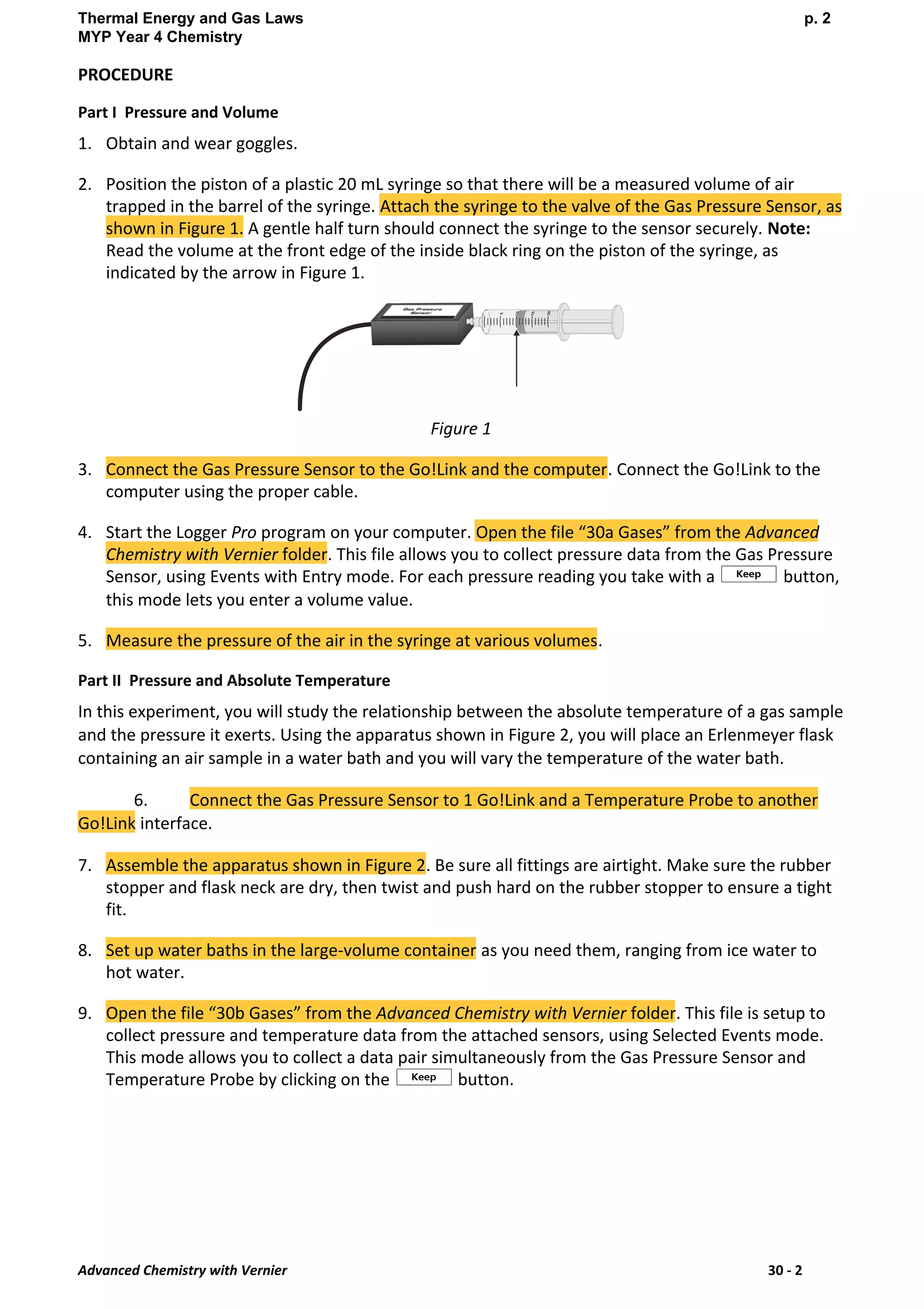The document outlines a series of experiments designed to illustrate key gas laws, focusing on the relationships between pressure, volume, temperature, and the number of molecules in a gas. Each experiment includes detailed procedural instructions and requires the use of specific equipment to gather data for analysis. The goal is to derive mathematical relationships for the gas laws through experimentation and data evaluation.




